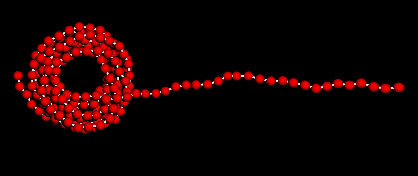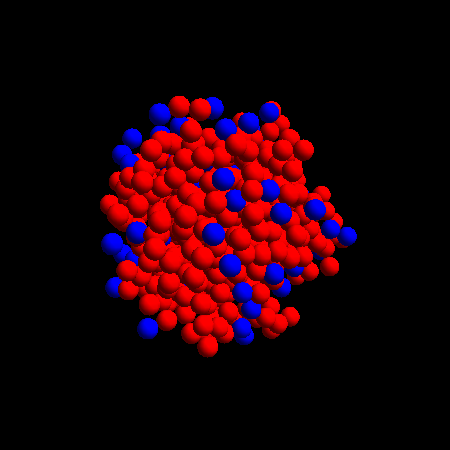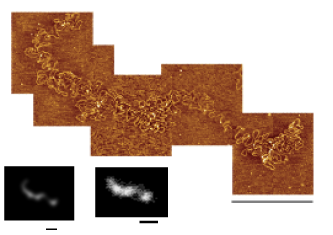Research
Active Matter
Thermophoresis
Macromolecules assume compact conformations in certain situations. Examples include DNA in living cells, proteins in native states, and other polymers in poor solvent conditions or under a compression field. Once released from the condition, these polymers expand to swollen coiled state, which is characterized by developed fluctuations. This expansion process is of interest in two different contexts. First, this process is relevant to coil-globule transitions, thus, regarded as a fundamental topic in polymer science. Unfortunately, there are comparatively fewer past studies on this expansion process than on the folding (coil to globule) process. The second case of interest is encountered in the field of confined polymers. A recent advance in nanoscale fabrications and singlechain experiments allows one to manipulate and observe individual polymers, thereby facilitating a number of potential applications in biological as well as nanoscale sciences.
Physics inspired by Biology
Physics of stress fibers
Stress fibers are contractile actomyosin bundles commonly observed in the cytoskeleton of metazoan cells. The spatial profile of the polarity of actin filaments inside contractile actomyosin bundles is either monotonic (graded) or periodic (alternating). In the framework of linear irreversible thermodynamics, we write the constitutive equations for a polar, active, elastic one-dimensional medium. An analysis of the resulting equations for the dynamics of polarity shows that the transition from graded to alternating polarity patterns is a nonequilibrium Lifshitz point. Active contractility is a necessary condition for the emergence of sarcomeric, alternating polarity patterns.

Polymer Translocation
|
Transition Kinetics of a single semiflexible polymer
|
Polymer stretching
movie: mechanical unfolding of a semiflexible polymer
|
Rod-coil copolymer
|
Two-state polymer
|
phase transition in DNA
|
|
|
|
 Kyoto University
Kyoto University

